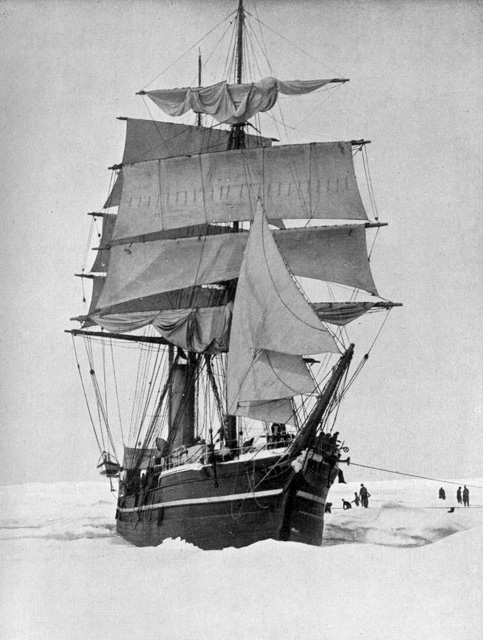|
Rest of the storyMedia mixup on what ship really rescued Terra Nova crew in 1943Posted September 14, 2012
The recent discovery off the coast of Greenland of the remains of the SS Terra Nova, the ship that carried Briton Robert F. Scott and his team to Antarctica in 1910, generated headlines around the world. It also perpetuated a little factual inaccuracy on a footnote to the Terra Nova story, including by this publication. A private research vessel reported finding the Terra Nova last month during a sea trial of its sonar equipment. The ship has gained fame for its role in the British Antarctic Expedition 1910-13 About 30 years after its famous Antarctic voyage, the wooden-hulled barque had been chartered in 1942 to carry supplies to base stations in Greenland during World War II. On Sept. 12, 1943, the vessel sent an SOS reporting damage, according to the declassified September 1943 Secret War Diary of the Greenland Patrol The Terra Nova reported “water over its boilers and pumps not working.” The USCG icebreaker Southwind, as had been widely reported, was the first ship to respond and rescued the crew. It made for an interesting tale, especially for polar enthusiasts who know that the Southwind was later involved in Operation Deep Freeze End of story. Except for the fact that the Southwind wasn’t the ship that saved the Terra Nova crew. Reader Michael Zemyan contacted The Antarctic Sun after an alert friend had noted that the Southwind wasn’t commissioned for service until July 1944, about 10 months after the sinking of the Terra Nova. In the Book of Valor Each man was cited for his “heroic conduct” for volunteering to operate a lifeboat for four hours without relief to transfer all 20 survivors of the Terra Nova to the Atak, a former trawler taken into service in 1942 by the USCG for service on the Greenland Patrol Additional online research by amateur polar historian Bill Spindler found the Greenland War Diary for September 1943, which clearly describes the role of the Atak in the rescue. It reached the Terra Nova on Sept. 13, according to the logs, rescued all personnel aboard and then proceeded to Narsarssuak, Greenland. The cutters Amarok, Laurel, and Manitou, also part of the Greenland Patrol, responded to the SOS as well, but the Amarok and Manitou turned back after their services were not needed. The Laurel sank the burning Terra Nova with gunfire, sending it to the bottom of the sea at an estimated 70 fathoms, or about 400 feet. So, how did the mistake in identity happen? It’s somewhat unclear, but the popular online encyclopedia Wikipedia had cited the Southwind as the rescue ship on Sept. 13, 1943, for the Terra Nova ship entry. It has since been updated. Zemyan has a theory. The Southwind had a long and varied career, during which she went by several names. The following history comes from the official USCG Southwind history webpage After a brief period of service along the coast of Greenland, where she assisted her sister-ship Eastwind in capturing German weather teams, the icebreaker was transferred to the Soviet Union under the terms of the Lend-Lease program on March 25, 1945. It was renamed Admiral Makarov after a famous Russian mariner and naval architect who is recognized as the father of the modern icebreaker. The ship operated in the Russian merchant marine for four-and-a-half years before the Soviet Union returned her to the United States on Dec. 28, 1949, when it changed names yet again, becoming the USS Atka. During her years as the Atka, she made a total of 19 trips into Arctic waters and nine extensive voyages to Antarctica. In October 1966, she was transferred back to the USCG. Her new commanding officer, on behalf of the crew, requested the Atka revert back to Southwind. The request was granted early in 1967. She was eventually decommissioned in 1976 and sold for scrap. Atak. Atka. “Perhaps at some point someone was searching for information on the Atak, and looked up Atka instead, and then found the history of the Southwind,” Zemyan said. And, in the words of Paul Harvey, that’s the rest of the story. |



For USAP Participants |
For The Public |
For Researchers and EducatorsContact UsNational Science FoundationOffice of Polar Programs Geosciences Directorate 2415 Eisenhower Avenue, Suite W7100 Alexandria, VA 22314 Sign up for the NSF Office of Polar Programs newsletter and events. Feedback Form |



